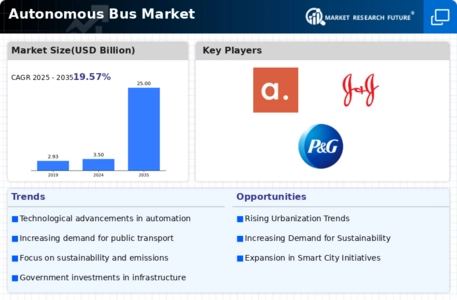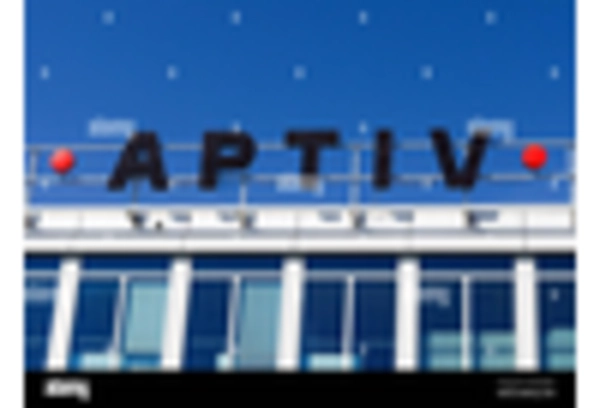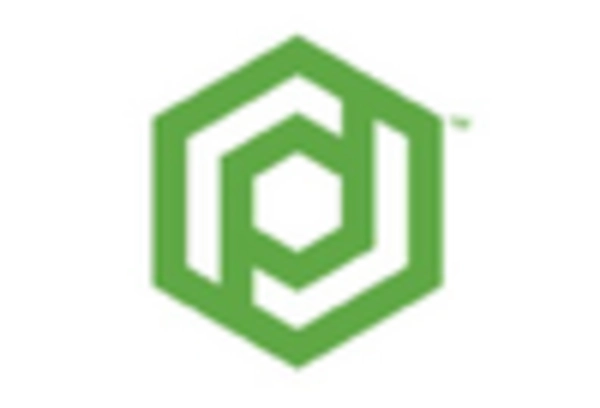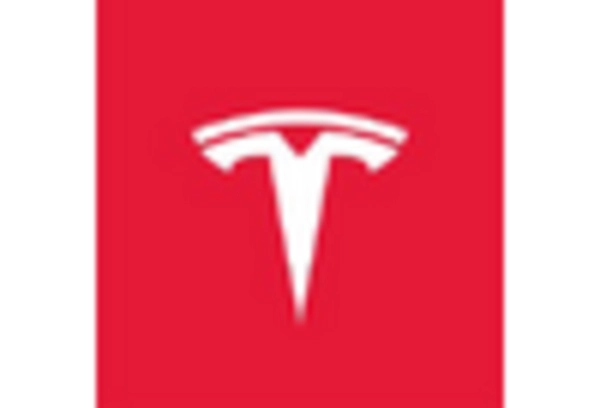The Autonomous Bus Market is currently characterized by a dynamic competitive landscape, driven by technological advancements, regulatory support, and increasing urbanization. Major players such as Waymo (US), Tesla (US), and Baidu (CN) are at the forefront, each adopting distinct strategies to enhance their market positioning. Waymo (US) focuses on leveraging its extensive experience in autonomous driving technology, emphasizing safety and reliability in its operations. Tesla (US), on the other hand, integrates its autonomous bus initiatives with its electric vehicle ecosystem, aiming for a seamless transition to sustainable transport solutions. Baidu (CN) is heavily investing in AI and cloud computing to enhance its autonomous driving capabilities, indicating a strong commitment to innovation and technological leadership. Collectively, these strategies contribute to a competitive environment that is increasingly centered around technological prowess and operational efficiency.
In terms of business tactics, companies are localizing manufacturing and optimizing supply chains to enhance responsiveness to market demands. The Autonomous Bus Market appears moderately fragmented, with a mix of established players and emerging startups. This structure allows for diverse approaches to market entry and expansion, as companies seek to capitalize on regional opportunities while navigating regulatory landscapes. The influence of key players is substantial, as their strategic decisions often set industry benchmarks and drive innovation across the sector.
In August 2025, Waymo (US) announced a partnership with a major public transportation agency to integrate its autonomous buses into existing transit systems. This collaboration is strategically significant as it not only expands Waymo's operational footprint but also enhances public acceptance of autonomous technology by embedding it within familiar transit frameworks. Such partnerships may pave the way for broader adoption and integration of autonomous vehicles in urban settings.
In September 2025, Tesla (US) unveiled its latest autonomous bus model, which features advanced AI capabilities and enhanced safety features. This launch is crucial as it underscores Tesla's commitment to innovation and positions the company as a leader in the electric autonomous bus segment. The integration of cutting-edge technology is likely to attract both public and private sector interest, further solidifying Tesla's market presence.
In July 2025, Baidu (CN) expanded its autonomous bus pilot programs to several new cities across China, focusing on urban areas with high traffic congestion. This strategic move highlights Baidu's intent to leverage its AI technology to address urban mobility challenges. By targeting cities with significant transportation issues, Baidu may enhance its competitive edge and demonstrate the practical benefits of autonomous buses in real-world scenarios.
As of October 2025, the Autonomous Bus Market is witnessing trends that emphasize digitalization, sustainability, and AI integration. Strategic alliances are increasingly shaping the competitive landscape, as companies recognize the value of collaboration in accelerating technological advancements. Looking ahead, competitive differentiation is likely to evolve from traditional price-based competition to a focus on innovation, technological integration, and supply chain reliability. This shift suggests that companies that prioritize these aspects will be better positioned to thrive in an increasingly complex market.

















Leave a Comment